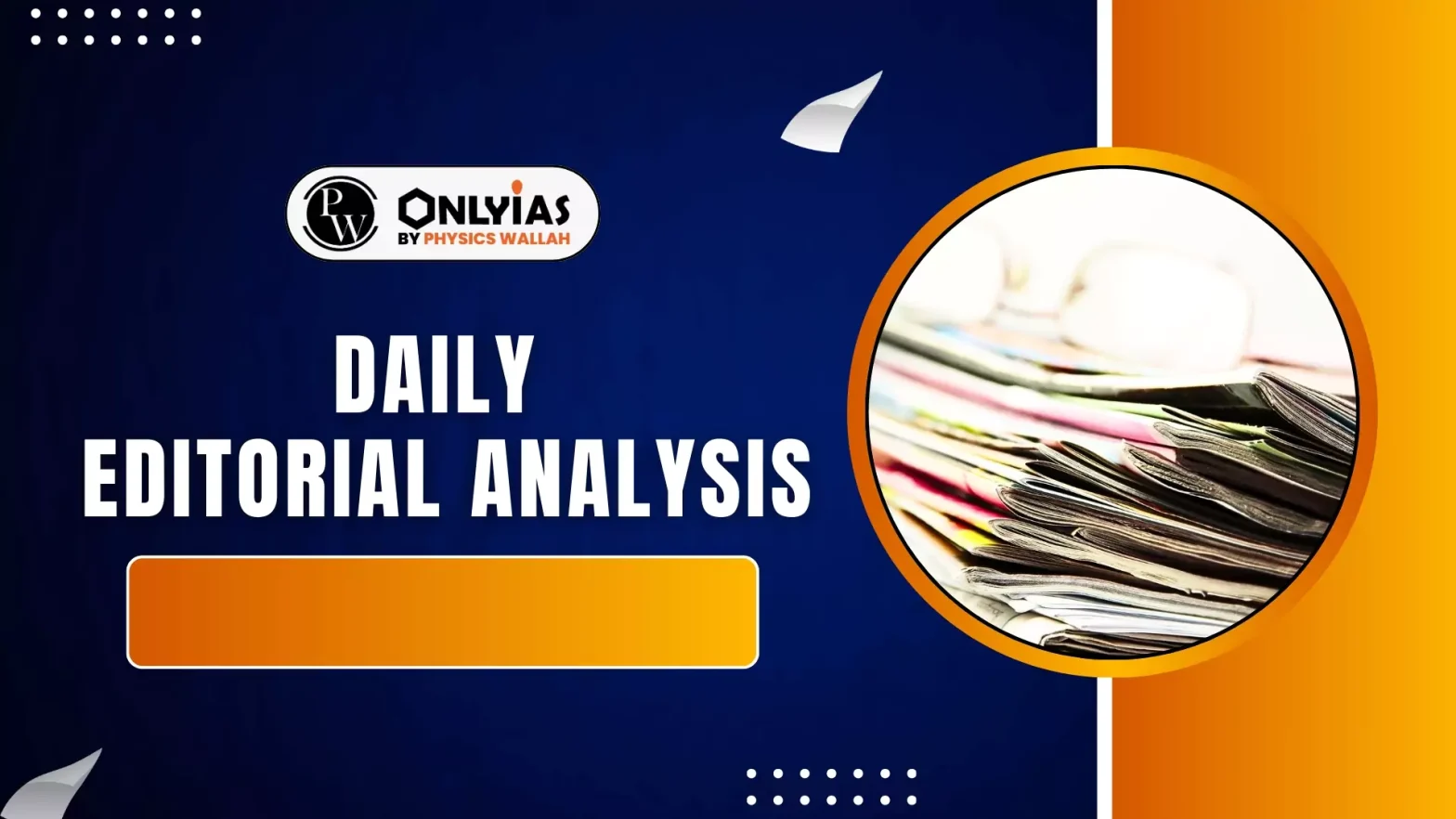Recently there was a proposal raised in the Lok Sabha for the creation of a specialised All India Service Cadre for the urban transport sector.
Status of Urban Transport
- No Explicit Mention in the Constitution: The Constitution, specifically the Seventh Schedule, does not explicitly mention urban transport in any of its three lists (Union, State, or Concurrent).
- It remains a cross-cutting issue:
- “Urban planning” is listed under the State List.
- “Highways” and “Railways” fall under the Union List.
- Institutional Evolution and Role of MoHUA: In 1986, urban transport was formally assigned to the Ministry of Urban Development, now the Ministry of Housing and Urban Affairs (MoHUA).
- MoHUA was designated as the nodal ministry for urban transport, especially for Mass Rapid Transit Systems (MRTS).
- Role of Officer on Special Duty (OSD): MoHUA appointed an OSD for MRTS to coordinate metro rail projects.
- Initially, these OSDs were senior railway engineers who brought technical expertise to urban metro systems.
- Over time, the position was increasingly held by bureaucrats, playing a key role in:
- National Urban Transport Policy (2006)
- Metro Rail Policy (2017)
- Capacity Building Initiatives: The Ministry also conducted training and capacity-building programmes for town planners and professionals, including through projects like the Sustainable Urban Transport Project (GEF-SUTP).
Persistent Governance Challenges in Urban Transport
- Fragmented Responsibilities: Responsibilities are fragmented and divided among numerous entities: municipal corporations, metro rail corporations, State Transport Undertakings (STUs), Regional Transport Offices (RTOs), and other parastatal agencies.
- Each operates with its own logic, data, and priorities, frequently without a shared vision or coordinated action.
- This leads to a blame game, making it incredibly difficult to fix accountability when issues arise, such as roads being dug up by one department with no clear responsibility for repair.
- Lack of Shared Vision and Coordination: There is an absence of a unified administrative structure and a dedicated corps of officers who can anchor long-term strategies, facilitate stakeholder coordination, and ensure policy continuity.
Concept and Structure of AIUTS
- The proposal is for the establishment of a specialised cadre similar to the: Indian Forest Service (IFS), Indian Statistical Service (ISS)
- The cadre would consist of officers trained in: Transport policy and planning, Urban infrastructure and finance, Regulation and systems management
- Policy Endorsement: The High-Level Committee on Urban Planning (2023) recommended:
- Creation of an All India Urban and Regional Planning Service.
- Enactment of a National Town Planning Legislation.
- The committee suggested establishing a professional, permanent institutional presence in cities to address evolving urban governance challenges.
Key Benefits of the Proposed AIUTS Cadre
- Specialised Expertise: Provides technical and operational knowledge in urban transport, Covers policy-making, regulation, planning, and day-to-day operations at the city/metropolitan level.
- Strategic Continuity: Helps counter the problem of short, fragmented tenures of generalist municipal commissioners.
- Enables long-term policy frameworks and their consistent implementation.
- Institutional Support to Urban Governance: Aids in setting up and running Unified Metropolitan Transport Authorities (UMTAs).
- Promotes coordination across fragmented agencies involved in urban transport.
- Utilisation of Existing Training Infrastructure: Administrative and technical training can be delivered through Department of Personnel and Training (DoPT) and related institutions.
- Strengthening Local Collaboration: Officers would be trained to engage with local elected representatives and community leaders.
- Ensures that policies are responsive to local needs and contexts.
- Addressing Capacity Deficits: Directly addresses weak state capacity and lack of professional competence in urban transport planning and execution.
Unified Metropolitan Transport Authorities (UMTAs) and Their Challenges
- The idea of Unified Metropolitan Transport Authorities (UMTAs) has been repeatedly recommended by key policy documents, including the National Urban Transport Policy (2006), the 12th Five-Year Plan’s Working Group on Urban Transport, and the Metro Rail Policy (2017).
- UMTAs are envisioned as nodal agencies for coordinated transport governance, acting as centralized bodies to manage city transport and ensure integrated, cooperative functioning among different agencies, thereby preventing blame games.
- The Delhi government is currently planning to establish its own UMTA to integrate various transport modes for efficient urban mobility, involving the Delhi Transport Corporation (DTC) and Delhi Metro Rail Corporation (DMRC).
- Several other states, including Tamil Nadu, Karnataka, Kerala, and Assam, have already introduced legislation to set up UMTAs in their metropolitan regions.
Challenges Faced By Cities in the implementation of UMTAs
- Legal ambiguities: There is often a lack of clarity in legal provisions regarding their authority and how to fix accountability.
- Lack of inter-agency coordinating mechanisms: Despite their purpose, UMTAs have struggled to effectively coordinate different transport agencies.
- Undefined jurisdiction: The precise scope and limits of UMTA powers are often not clearly defined.
- Institutional turf protection: Individual agencies (e.g., metro, road, water, gas) tend to prioritise their own work, leading to conflicts and hindering collective action.
Global Examples of Unified Urban Transport
- Cities like London, Vancouver, Singapore, and Paris offer models of unified urban transport governance.
- For example, Transport for London (TfL) effectively manages and coordinates all urban transport in London, serving as a leading institution equipped with professionals to handle complex transport issues.
Limitations of a Dedicated Cadre
- Bureaucratic Overload: While a dedicated cadre (such as the proposed All India Urban Transport Service) offers substantial benefits, it is not a “silver bullet” for all urban transport challenges.
- Simply adding another administrative layer without resolving existing capacity and bureaucratic constraints might increase complexity and red-tapism, ultimately hindering good governance.
- Beyond Engineering: Urban transport issues extend well beyond engineering solutions.
- They encompass social, political, and environmental dimensions. Any institutional reform must be:
- Responsive to local contexts: Tailored to the unique needs and conditions of each city.
- Adaptable: Capable of evolving with changing urban realities.
- Inclusive of Citizen Participation: Success depends on public awareness, disciplined traffic behavior, and active community engagement.
- For example, disciplined traffic in Shillong contrasts with common practices in cities like Delhi or Jaipur, illustrating the role of public behavior in urban transport management.
Key Actions for an Integrated Approach For Tackling the Issue of Urban Transport
- Operationalising the 74th Constitutional Amendment: The 74th Amendment, which empowers Urban Local Bodies (ULBs), must be fully implemented in both letter and spirit.
- Cities should be enabled to establish and strengthen institutional mechanisms such as Unified Metropolitan Transport Authorities (UMTAs) to coordinate planning, investment, and service delivery in urban transport.
- Fostering Collaborative Governance: A dedicated cadre must work in close partnership with local leaders and elected representatives, ensuring that policies are rooted in ground realities.
- Adopting a Holistic and Context-Sensitive Approach: Urban transport must be addressed not just as a technical or engineering problem but as a multidimensional issue involving:
- Social dynamics: Public awareness, behavioural discipline, and inclusiveness.
- Political context: Devolution of powers, local accountability, and participatory governance.
- Environmental sustainability: Climate resilience, low-emission mobility, and ecological integration.
Conclusion
Only through an integrated, citizen-centric, and adaptive framework can India’s urban mobility challenges be effectively addressed.
![]() 2 Aug 2025
2 Aug 2025

